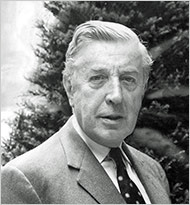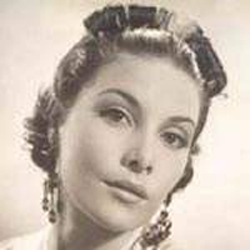Related Research Articles

Dame Ninette de Valois was an Irish-born British dancer, teacher, choreographer, and director of classical ballet. Most notably, she danced professionally with Serge Diaghilev's Ballets Russes, later establishing the Royal Ballet, one of the foremost ballet companies of the 20th century and one of the leading ballet companies in the world. She also established the Royal Ballet School and the touring company which became the Birmingham Royal Ballet. She is widely regarded as one of the most influential figures in the history of ballet and as the "godmother" of English and Irish ballet.

Sir Robert Murray Helpmann was an Australian ballet dancer, actor, director, and choreographer. After early work in Australia he moved to Britain in 1932, where he joined the Vic-Wells Ballet under its creator, Ninette de Valois. He became one of the company's leading men, partnering Alicia Markova and later Margot Fonteyn. When Frederick Ashton, the company's chief choreographer, was called up for military service in the Second World War, Helpmann took over from him while continuing as a principal dancer.

Sir Frederick William Mallandaine Ashton was a British ballet dancer and choreographer. He also worked as a director and choreographer in opera, film and revue.

Dame Alicia Markova DBE was a British ballerina and a choreographer, director and teacher of classical ballet. Most noted for her career with Sergei Diaghilev's Ballets Russes and touring internationally, she was widely considered to be one of the greatest classical ballet dancers of the twentieth century. She was the first British dancer to become the principal dancer of a ballet company and, with Dame Margot Fonteyn, is one of only two English dancers to be recognised as a prima ballerina assoluta. Markova was a founder dancer of the Rambert Dance Company, The Royal Ballet and American Ballet Theatre, and was co-founder and director of the English National Ballet.

The Royal Ballet is a British internationally renowned classical ballet company, based at the Royal Opera House in Covent Garden, London, England. The largest of the five major ballet companies in Great Britain, the Royal Ballet was founded in 1931 by Dame Ninette de Valois. It became the resident ballet company of the Royal Opera House in 1946, and has purpose-built facilities within these premises. It was granted a royal charter in 1956, becoming recognised as Britain's flagship ballet company.

The Royal Ballet School is a British school of classical ballet training founded in 1926 by the Anglo-Irish ballerina and choreographer Ninette de Valois. The school's aim is to train and educate outstanding classical ballet dancers, especially for the Royal Ballet and the Birmingham Royal Ballet.
A Rake's Progress is a series of eight paintings by 18th-century English artist William Hogarth. The canvases were produced in 1732–1734, then engraved in 1734 and published in print form in 1735. The series shows the decline and fall of Tom Rakewell, the spendthrift son and heir of a rich merchant, who comes to London, wastes all his money on luxurious living, prostitution and gambling, and as a consequence is imprisoned in the Fleet Prison and ultimately Bethlem Hospital (Bedlam). The original paintings are in the collection of Sir John Soane's Museum in London, where they are normally on display for a short period each day.

Phyllis Spira was a South African ballet dancer who began her career with the Royal Ballet in England. Upon returning to South Africa, she spent twenty-eight years as prima ballerina of CAPAB Ballet, a professional company in Cape Town named for the Cape Performing Arts Board. In 1984 she was named the first South African Prima Ballerina Assoluta.
Nadia Nerina was a South African dancer who was "one of the most gifted, versatile, and inspiring ballerinas of The Royal Ballet" during the 1950s and 1960s. She was known "for her technical virtuosity, lightness afoot, effortless-seeming jumps, and joyful charm onstage, especially in comedic roles."
Maryon Lane was a South African ballet dancer who became well known in Britain as a ballerina of the Sadler's Wells Theatre Ballet and as a soloist with the Royal Ballet.
The Haunted Ballroom is a one-act ballet, in three scenes and an interlude, with music and libretto by Geoffrey Toye and choreography by Ninette de Valois. It was first produced in London in 1934, and was revived several times, but much of the choreography is now lost. The ballet is a Gothic melodrama about a fatal family curse.
British ballet is most recognised for two leading methods, those of the Royal Ballet School and the Royal Academy of Dance. The identifying characteristic of British ballet is the focus on clean, precise technique and purity of line that is free of exaggeration and mannerisms. The training of dancers in Britain is noted for its slow progression, with a great deal of attention paid to basic technique. British ballet methods operate on the principle that establishing correct technique and strength slowly makes it much easier for the student to adapt to more difficult vocabulary and techniques later on. The main difference between the two is that The Royal Ballet School trains professional dancers, the Royal Academy of Dance trains teachers.
The Queen Elizabeth II Coronation Award is an honour presented annually by the Royal Academy of Dance, to people who have made a significant contribution to the ballet and dance industry. The award was instituted by Dame Adeline Genee in 1953, to mark the coronation of Queen Elizabeth II and her appointment as Royal Patron of the Academy. The first winner of the award was Dame Ninette de Valois, founder of the Royal Ballet, Birmingham Royal Ballet and Royal Ballet School. The award has since been presented to a number of notable people, and is recognised as the highest honour awarded by the Academy.
Gavin Gordon was a Scottish bass singer, actor and composer, best known for his 1935 Hogarthian ballet The Rake's Progress.

Gordon Anthony was a British photographer, known particularly for his photographs of ballet and theatre in Britain.

Pearl Argyle was a South African ballet dancer and actress. She appeared in leading roles with English ballet companies in the 1930s and later performed in stage musicals and in films.
William Chappell was a British dancer, ballet designer and director. He is most noted for his designs for more than 40 ballets or revues, including many of the early works of Sir Frederick Ashton and Dame Ninette de Valois.
Harold Turner was an English ballet dancer, teacher, and ballet master. Widely recognized as "modern British ballet's first male virtuoso," he had an illustrious career as a principal dancer, after which he continued to perform in character roles. He is acknowledged as a key figure in British dance history.
The Camargo Society was a London society which created and produced ballet between 1930 and 1933, giving opportunity to British musicians, choreographers, designers and dancers. Its influence was disproportionate to its short life. Dame Ninette de Valois, founder of The Royal Ballet, saw it as "having done much for the cause of English ballet", and Encyclopædia Britannica Online credits it with "keeping ballet alive in England during the early 1930s". The society was named after the eighteenth-century French dancer Marie Anne de Cupis de Camargo.
Alexis Rassine was a South African ballet dancer who enjoyed his greatest success with the Sadler's Wells Ballet in England in the 1940s and early 1950s. He is remembered as a classical dancer who made "a major contribution to British ballet" during wartime and "helped to keep the flag flying when all about was chaos and disaster."
References
- ↑ Eric Walter White (1966). Stravinsky, the Composer and His Works . University of California Press. p. 418. LCCN 66-27667.
- ↑ Grove's Dictionary of Music and Musicians, 5th ed, 1954, Vol. III, p. 717.
- ↑ Anthony Baines; Adrian Boult (2012) [1991]. Woodwind Instruments and Their History . Courier Corporation. p. 35. ISBN 978-0486268859.
- ↑ "Tribute to madam [IL]: Classical Reviews- November 2001 MusicWeb(UK)". Musicweb-international.com. 1 November 2001. Retrieved 24 May 2019.
- ↑ Rendezvous in Sarasota
- ↑ "Sir Robert Helpmann 3". Liveperformance.com.au. Retrieved 24 May 2019.
- ↑ "Dame Alicia Markova" . The Independent . 3 December 2004. Archived from the original on 18 June 2022. Retrieved 24 May 2019.